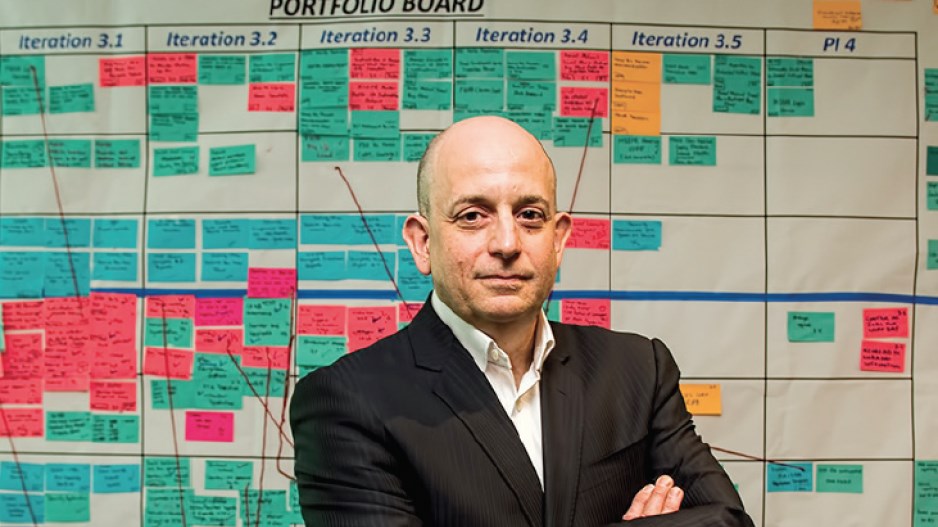Barry Rivelis is a translator, a broker of information, a strategic CIO. He is the chief strategy and information officer at Pacific Blue Cross, where he also serves as senior vice-president.
He was the inaugural winner of BIV’s CIO of the Year award, and he shared five insights on strategy in the March 2020 issue of BIV Magazine.
1. What does it mean to be a strategic CIO?
CIOs have traditionally been seen to focus exclusively on technology. However, I view the role as that of a translator who translates between the business and the technical organization. More importantly, a CIO translates how technology can deliver overall organizational improvement and performance. Technology cannot be viewed just through the lens of technology. It has to be linked directly to your overall organizational direction.
2. How have you honed your strategic thinking?
I am an experiential learner and throughout my career I have strived to put myself in situations that challenge the status quo and force me to look at things differently. I have been fortunate to work for, alongside and lead amazing individuals who have pushed me to think about not only what we need to do differently, but also what we need to stop. Strategy is about understanding the environment you’re in and making choices. I have also been gifted with an ability take multiple concepts and ideas and distil them into consumable concepts. It is something I have used throughout my career.
3. How do you approach a challenge?
The size and scope of a challenge can at times be daunting. I try to break it down into consumable and actionable pieces. Those pieces are divided into elements that lead you to your optimum solution. What I have found, however, is that you don’t arrive at the ultimate outcome by following a straight line, and as a result, you need to be adaptable. Every challenge is also an opportunity, so it is important to try to shift your mindset into a positive versus negative setting. What has been fascinating to me is how much I have learned when I’ve failed. That learning has contributed to greater career and life success.
4. What sets a truly successful strategy apart?
A good strategy is easily understood, is aligned to the environment you are operating in and identifies what you are going to do and, as importantly, what you are not going to do. Resources need to be aligned to the strategy, and measured and tracked appropriately. The final part of a good strategy is leadership. When you embark on a new strategy, things feel awkward and different. But if you believe your analysis and direction, great leadership will provide the discipline to make the choices you and your team have agreed to.
5. If leaders want to improve their career or company strategy, or their strategic thinking, where should they start?
You need to first determine where you want to go, either in your career or your organization, and then work backwards through the tactics to get you to that place. At the same time, be brave enough to say no if you don’t believe a particular tactic will get you to where you want to go. When you say no, be comfortable that the door you are going to close won’t actually open up a pathway to your destination. Second, be curious and ask a lot of questions. Questions allow you to gain insight. Third, if you really want to learn from someone or a group of people, ask. You would be amazed how often people don’t ask. Fourth, work hard – nothing replaces hard work. And finally, say thank you. I still send thank-you notes, which extends a level of gratitude that people truly appreciate and will take the time to reciprocate in the future.
This article was first published in the February 2020 issue of BIV Magazine, which can be read here.




